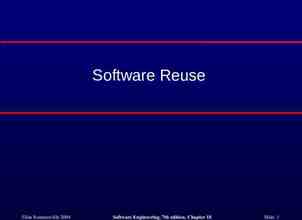“Getting Value From Health IT Investments: There are Doubters” An
10 Slides599.00 KB
“Getting Value From Health IT Investments: There are Doubters” An American Journal of Medicine article says there are no savings in administrative costs, and “modest” improvements in process measures of quality, using healthcare IT. Do you believe it?
Authors & Data Sources Authors: – David Himmelstein, MD, Harvard Medical School – Adam Wright, PhD., Partners – Steffie Woolhandler, MD, MPH, Harvard Medical School Data Sources: – HIMSS Analytics data from 2003-2007 – Medicare Cost Report data from 2003-2007 – Dartmouth Cost & Quality data from 2005 2009 HIMSS Analytics
Findings Hospitals’ administrative costs increased slightly from 24.4% in 2003 to 24.9% in 2007. overall computerization scores showed no correlation with administrative costs. Between 2003 & 2007, a more rapid increase in computerization was associated with a faster increase in administrative costs. On multivariate analysis, there was a trend toward computerization predicting higher quality. Both the use of EMRs and CPOE predicted higher composite quality scores. 2009 HIMSS Analytics
Findings “We found no evidence that computerization has lowered costs or streamlined administration.” “Even the select group of hospitals at the cutting edge of computerization showed neither cost nor efficiency advantages.” “Our longitudinal analysis suggests that computerization may actually increase administrative costs, at least in the near term.” “Although optimal computerization probably improves quality, it remains unclear whether the systems currently deployed in most hospitals achieve such improvement.” 2009 HIMSS Analytics
Conclusions “Perhaps computerization cannot decrease costs because savings are offset by the expense of purchasing and maintaining the computer system itself.” “Computerization may eventually yield cost and efficiency gains, but only at a more advanced stage than achieved by even the “Most Wired” hospitals.” “We believe that the computer’s potential to improve efficiency is unrealized because the commercial marketplace does not favor optimal products. Coding & other reimbursement-driven documentation might take precedence over efficiency and the encouragement of clinical parsimony.” 2009 HIMSS Analytics
Perspectives Most do not think that simply adopting, even widely, a technology would ever magically on its own improve quality or lower costs. I’m not sure why these authors seemed to say otherwise. The point as many have noted over and over again is for health professionals to adopt and then USE the technology for improved quality, including improved efficiency. – Michael Painter, TheHealthcareBlog 2009 HIMSS Analytics
My Perspectives In 2005, there were no Stage 6 or Stage 7 hospitals and only 2.5% were above Stage 3. Today, there are 86 Stage 6s, 33 Stage 7s, and 13.7% are above Stage 3. 2009 HIMSS Analytics
My Perspectives This study looked at the healthcare IT environment four years ago, and it’s a useful starting point for the conversation we need to have. What choice do we have – go back to and/or stay with, paper? 2009 HIMSS Analytics
Questions for James/attendees What counsel would you give CIOs or other IT professionals as they try to explain this to their executive management teams and boards? Will this research have any impact on the HCOs that haven’t made significant EMR investments? What’s the solution? What has Group Health done to get value from these expensive applications? What has been your experience, lessons learned and results? 2009 HIMSS Analytics
Canadian EMR Adoption Model 2009 HIMSS Analytics















